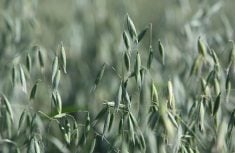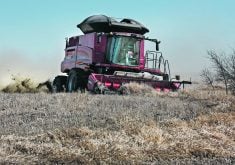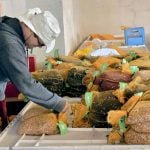Igor Falak looked down at the plants freshly pulled from the St. Albert, Alta., soil. What he saw Aug. 8 made him feel good about being a plant breeder.
Earlier that day, the Ontario research scientist had joined assistant professor Steven Stelkov’s team from the University of Alberta to visit the field where clubroot had been discovered in 2003.
“Steve’s lab group was testing our plant materials. I don’t think most of them realized the significance of what we had at our feet,” said Falak, from Pioneer Hi-Bred.
Read Also

VIDEO: Ag in Motion documentary launches second season
The second season of the the Western Producer’s documentary series about Ag in Motion launched Oct. 8.
“In the very field where clubroot had started in the Edmonton area, we had the solution. It had come full circle. We had strong resistance (in a new canola variety) in the same heavily infected field where it began, 10-fold resistance over what had been known before,” he said.
It took only five years to develop a new variety of high performance canola that had strong resistance to a fungal disease that had crippled the Canadian canola industry in one its most productive growing areas.
Clubroot is a soil-borne disease that is endemic in Europe and can be found in Eastern Canada.
However, when the race known as pathotype 3 showed up in the area surrounding Edmonton, it appeared there would be no quick solution to the problem.
Research director Dave Charne of Pioneer said it didn’t look good for the industry in north-central Alberta.
“It was spreading rapidly. First a couple of counties around St. Albert and Leduc. Last year it was 14, with some instances in other parts of the province,” he said.
Clubroot has long-term persistence in the soil and there were no fungicides and no genetics to manage the problem.
“The solution? Don’t grow canola,” he said.
But Falak was able to call on the company’s resources around the globe to try to find a solution.
“Within our company we have access to resistant germplasm and (researcher experience) in Europe. It meant we could start screening for resistance to the race (of clubroot) that is present on the Prairies,” he said.
Pioneer Hi-Bred created parallel breeding and screening research streams to develop a high performance canola variety and find the genetic resistance.
“Five years is very fast. While there is some luck involved, we make our own luck. We were able to respond rapidly each time found what we were looking for and with the help of the province of Alberta and the U of A, we could move fast,” Falak said.
The new high yielding variety is a Round Up Ready hybrid canola with the clubroot resistance bred in the traditional manner.
Charne said Pioneer Hi-Bred hopes the variety will be granted interim registration this winter. The company is producing commercial seed in South America that it hopes to release to Alberta growers this spring.














